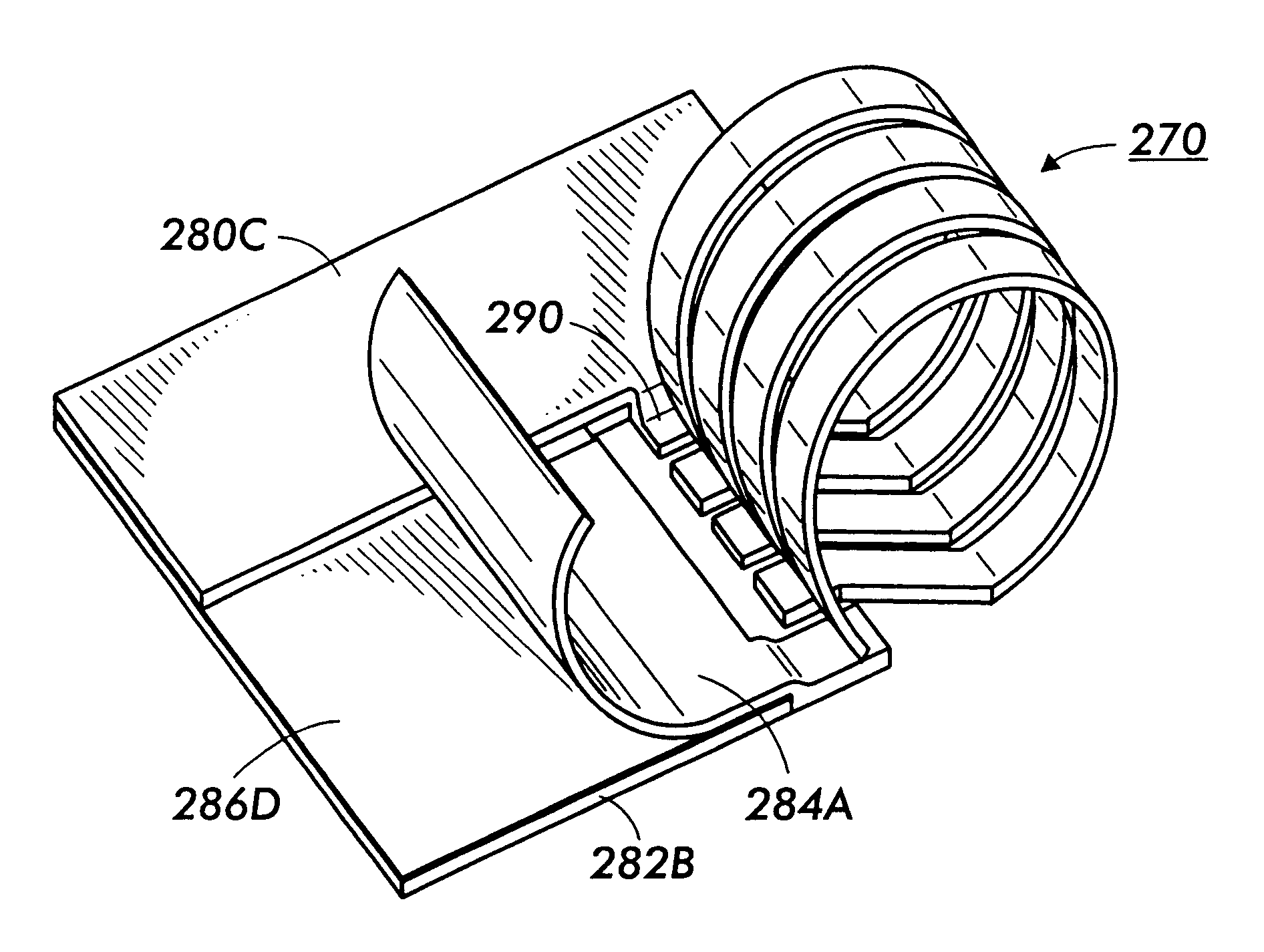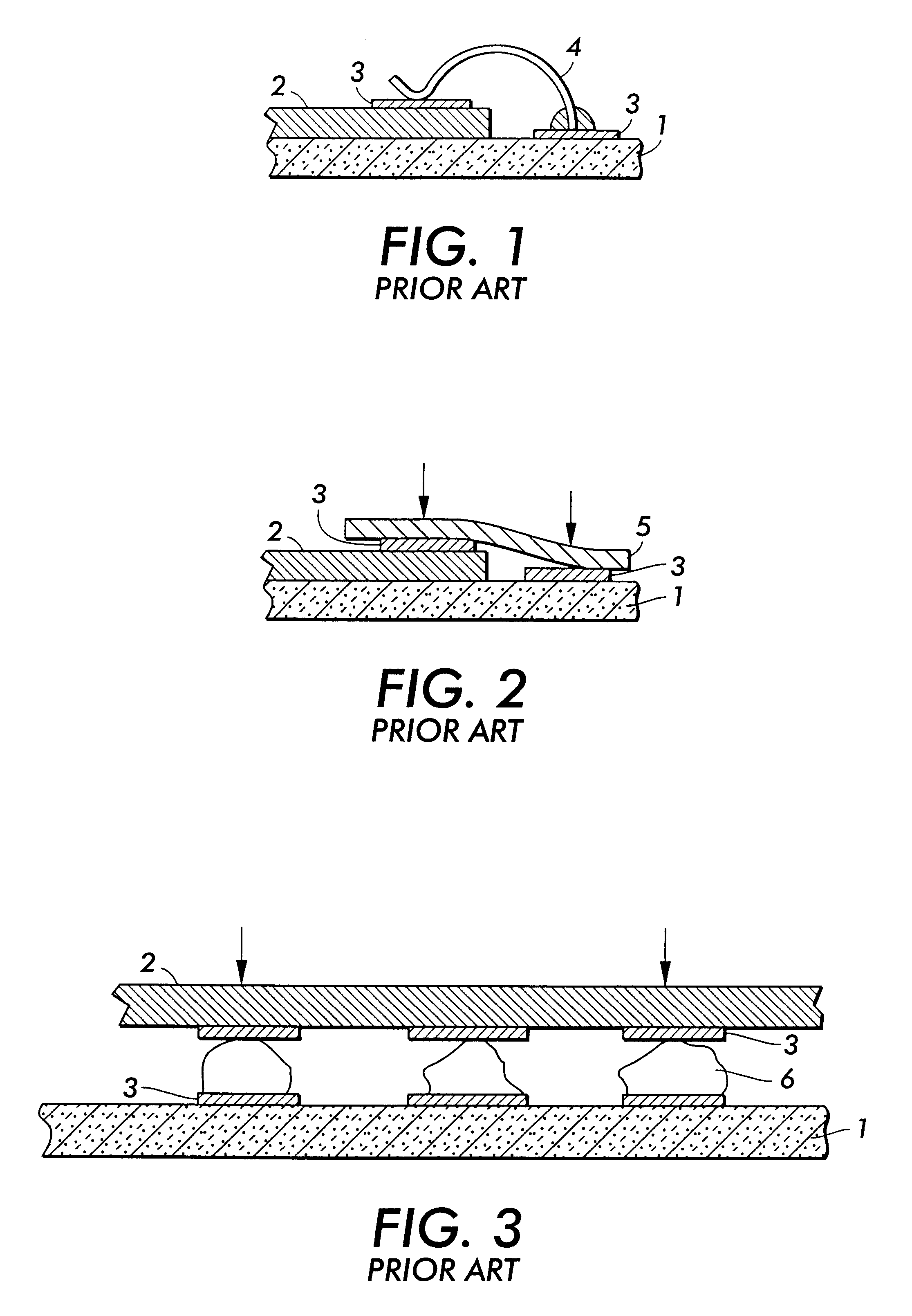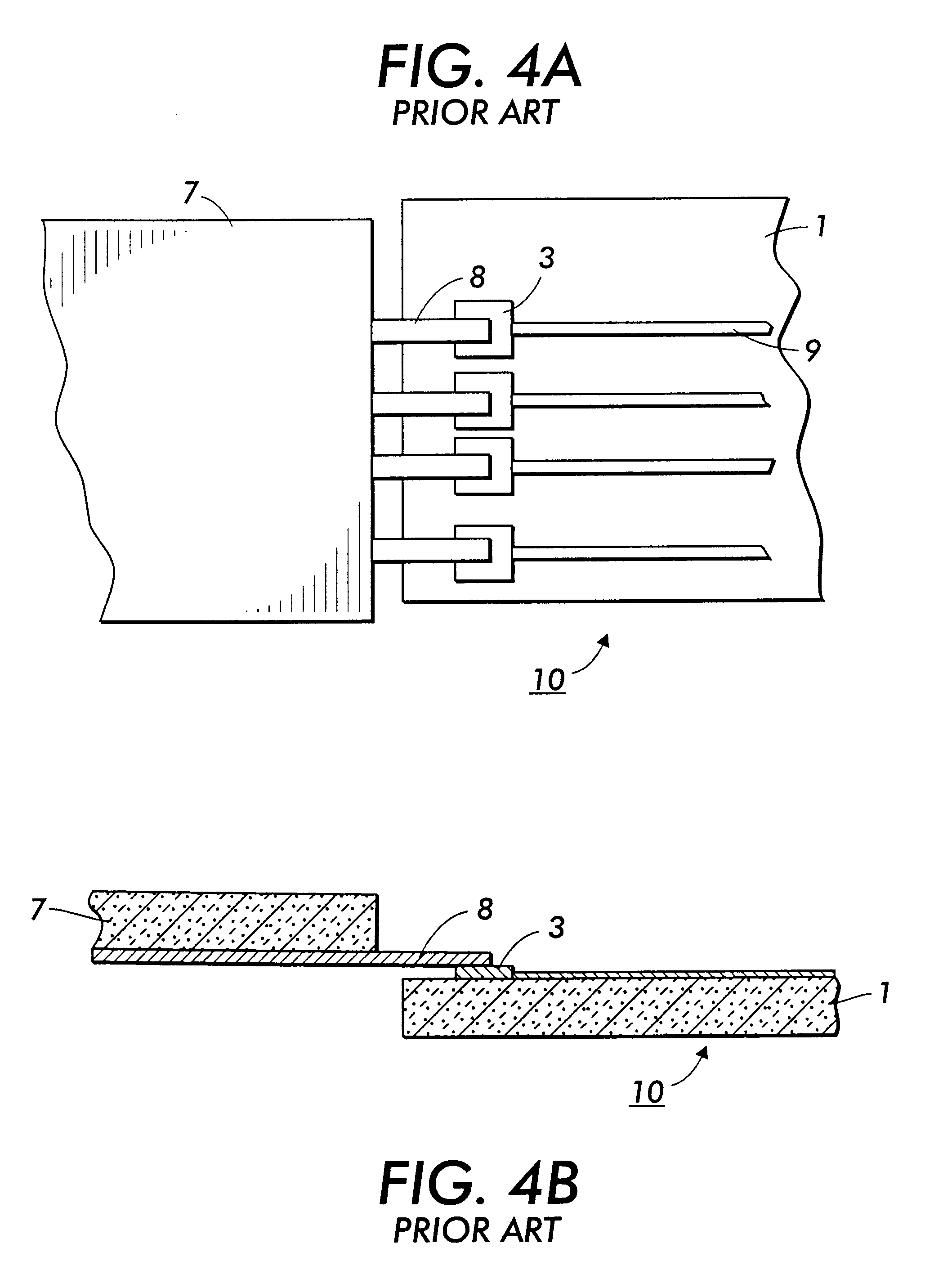Photolithographically-patterned out-of-plane coil structures and method of making
a technology of out-of-plane coils and photolithographic patterns, which is applied in the direction of inductance with magnetic core inductance of printed elements, etc., can solve the problems of non-uniform contact force, high cost, labor-intensive wire bonding of each contact pad 3 on the chip 2 to the corresponding contact pad 3 on the substrate 1,
- Summary
- Abstract
- Description
- Claims
- Application Information
AI Technical Summary
Problems solved by technology
Method used
Image
Examples
Embodiment Construction
Varicap AB with a tuning range of 500 .mu.m by 550 .mu.m variable capacitor, 500 nm Si.sub.3 N.sub.4 dielectric (.epsilon..sub.r =8)=3.5 to 22.7 pF with a minimum overlap=500 .mu.m by 50 .mu.m, maximum overlap at the snap-down limit=500 .mu.m by 320 .mu.m. At this point the tip of plate A is down by 66%.). Blocking capacitor DC of size 400 .mu.m by 1.6 mm, 500 nm Si.sub.3 N.sub.4 dielectric layer (.epsilon..sub.r =8)=91 pF. The tuning range of both capacitors in series=3.37 to 18.2 pF. The Micro-solenoid 270 has a 1 mm diameter, 5 windings, 500 .mu.m long=26 nH. As a result, the tuning range of the LC resonance frequency=538 to 232 MHz.
The invention provides a new type of high Q micro-inductors that can be integrated on Silicon ICs. Unlike most previous micro-coils, the coil structures feature an out-of-plane architecture where the coil axis is placed parallel to the wafer surface. The out-of-plane coils address the problem of induced substrate eddy currents associated with in-plane...
PUM
| Property | Measurement | Unit |
|---|---|---|
| skin depth | aaaaa | aaaaa |
| frequencies | aaaaa | aaaaa |
| frequencies | aaaaa | aaaaa |
Abstract
Description
Claims
Application Information
 Login to View More
Login to View More - R&D
- Intellectual Property
- Life Sciences
- Materials
- Tech Scout
- Unparalleled Data Quality
- Higher Quality Content
- 60% Fewer Hallucinations
Browse by: Latest US Patents, China's latest patents, Technical Efficacy Thesaurus, Application Domain, Technology Topic, Popular Technical Reports.
© 2025 PatSnap. All rights reserved.Legal|Privacy policy|Modern Slavery Act Transparency Statement|Sitemap|About US| Contact US: help@patsnap.com



